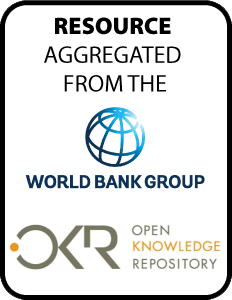Resource information
After many decades of stagnation, Kenyan
economy started to grow from the early-2000s. Much of this
growth has been attributed to total factor productivity
improvements in Kenyan economy arising out of many factors.
A large share of this growth originated in urban areas, in
the service and manufacturing sectors. These gains also
paralleled reduction in poverty and higher enrolment in
primary education. Yet, it has been argued that Kenyan
cities, especially Nairobi, are not realizing their
potential to contribute to economic growth and poverty
reduction. Rapid urbanization has left Kenyan cities with
huge backlogs in critical infrastructure and basic services,
resulting in sprawling, overcrowded and impoverished
informal settlements. The management of these cities has
been dogged by fragmentation in responsibilities, lack of
accountability at the local level, and weak capacities of
key institutions. Within 20 years or so, the majority of the
Kenyan population are expected be living in urban areas.
This scale of urbanization will pose further socio-economic,
environmental and institutional challenges for Kenyan
cities. The Government's vision 2030 has highlighted
rapid urbanization as one of four key challenges for the
country alongside income inequality, unemployment and low
savings. Despite their notable demographic and economic
weights of urban centers in Kenya, there is no single study
that gives a comprehensive overview of the urban landscape
in Kenya. The objective of this sector work is to fill that
gap by documenting and analyzing the situation in
Kenya's five largest urban centers. The study aims to
provide data and analysis regarding the state of these
cities to help inform the evolving urban agenda in Kenya and
to provide inputs into the preparation of the Kenya
Municipal Program (KMP).


